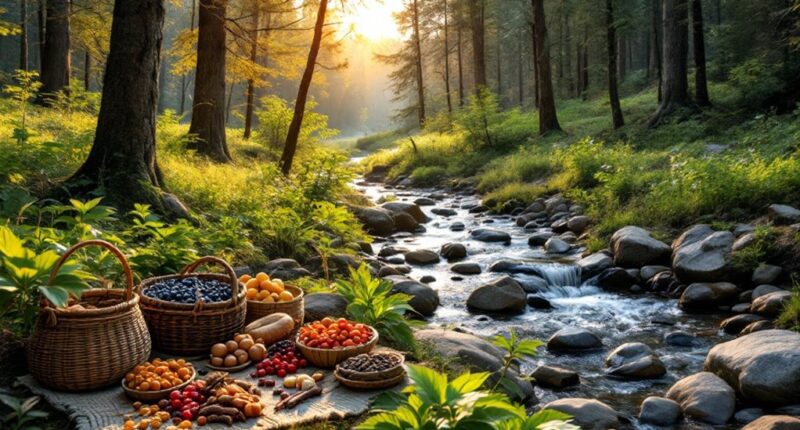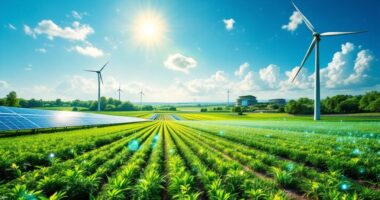Indigenous land management combines ancient wisdom with remarkable effectiveness. These practices—refined over millennia—have preserved 80% of Earth’s biodiversity while keeping deforestation rates lower than surrounding areas. Traditional ecological knowledge, far from being mere folklore, represents humanity’s original climate science with practical instructions for environmental sustainability. Despite managing only 4% of US land today, indigenous communities continue demonstrating how controlled burns and other techniques maintain healthy ecosystems. Their approaches offer valuable lessons as we face mounting environmental challenges.

Ancient whispers of sustainability echo across forests, grasslands, and watersheds where indigenous hands have shaped ecosystems for millennia. These aren’t just pretty landscapes – they’re living examples of effective environmental stewardship. Indigenous peoples, who represent just a sliver of the global population, are somehow managing to safeguard 80% of the world’s biodiversity. Not bad for a group that’s been systematically pushed to society’s margins!
The numbers tell a compelling story: deforestation rates clock in at a relatively modest 8.2% on indigenous lands compared to 9.6% elsewhere. That might seem like a small difference until you realize we’re talking about millions of acres of forest. These traditional land management practices – like controlled burns that would make modern firefighters nod in approval – have been fine-tuned over generations. It’s like they’ve been running the world’s longest environmental field experiment.
Indigenous wisdom isn’t just ancient history—it’s the Earth’s longest-running climate solution, proven effective across millions of acres.
Traditional Ecological Knowledge (TEK) isn’t just folklore dressed up in scientific clothing. It’s the original climate science, passed down through generations like a family recipe – except instead of grandma’s cookies, it’s instructions for planetary survival. This knowledge complements modern science beautifully, adding texture and nuance to satellite data and computer models. Prior to colonization, Indigenous Peoples effectively stewarded much of North America using practices like cultural burning that maintained resilient, healthy forest ecosystems.
Despite this impressive track record, indigenous communities face mounting challenges. Only 4% of US land remains under indigenous stewardship, and globally, 16% of indigenous-managed lands face high development risks. It’s like having the world’s best gardeners but continually shrinking their garden. Even more concerning, less than half of all claimed indigenous territories receive formal government recognition worldwide.
The good news? Global policy is slowly catching up. From the UN Declaration on Rights of Indigenous Peoples to COP26 commitments, there’s growing recognition that indigenous perspectives deserve a seat at the environmental table. Carbon offset projects offer economic opportunities, though balancing traditional practices with market demands remains tricky – like trying to monetize wisdom.
The path forward seems clear: genuine partnerships that respect indigenous rights while leveraging their unparalleled environmental expertise. After all, they’ve been acing the sustainability test since before it was cool.
Frequently Asked Questions
How Do Indigenous Communities Measure Success in Land Management Practices?
Indigenous communities measure land management success through a sophisticated blend of traditional ecological indicators and modern metrics. They track species abundance, seasonal cycles, and water quality alongside community well-being factors like food security and cultural knowledge transmission.
Environmental health measures include biodiversity levels and climate resilience, while governance indicators focus on land rights and decision-making autonomy. This holistic approach reflects their interconnected view of environmental and community health.
What Threats Do Indigenous Land Managers Face From Industrialization?
Indigenous land managers face multiple industrialization threats including energy infrastructure development, commercial agriculture expansion, mining operations, and urbanization. Nearly 60% of Indigenous territories worldwide are at risk.
These pressures often lead to deforestation, displacement, and loss of access to traditional resources. Indigenous communities frequently experience land grabbing, violence against activists, and human rights violations while defending their territories. Without formal recognition of their land rights, communities become increasingly vulnerable to industrial encroachment and environmental degradation.
How Are Indigenous Youth Engaged in Learning Traditional Practices?
Indigenous youth engage with traditional practices through multiple pathways. Summer camps offer hands-on learning in beading and regalia-making, while land-based activities connect them with ancestral hunting and fishing techniques. Elders serve as vital knowledge-keepers, sharing medicinal plant wisdom and spiritual traditions.
Many programs blend old and new—youth document traditional knowledge using technology and create art that merges indigenous heritage with contemporary styles. Language immersion programs guarantee cultural continuity by preserving indigenous languages for future generations.
Can Indigenous Land Management Techniques Apply to Urban Environments?
Indigenous land management techniques indeed apply effectively to urban environments. Traditional practices like cultural burning, native plant restoration, and water management are being adapted for city settings worldwide.
In urban spaces from Australia to Canada, Indigenous-led initiatives have increased biodiversity, improved climate resilience, and strengthened cultural connections. While challenges exist—limited space, regulatory barriers, and infrastructure conflicts—successful urban applications demonstrate these ancestral approaches can transform concrete jungles into more sustainable, culturally rich environments.
What Role Do Women Play in Indigenous Land Management Systems?
Women serve as cornerstone figures in indigenous land management systems. They function as primary knowledge keepers, responsible for seed preservation and agricultural innovation. Women perform approximately 70% of shifting cultivation work while simultaneously transmitting ecological wisdom across generations.
They develop climate adaptation strategies and advocate for collective land rights despite facing disproportionate risks. Their specialized expertise in biodiversity maintenance, water resource identification, and sustainable farming practices makes them essential stewards of environmental sustainability.









